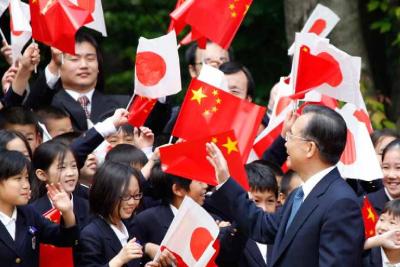Simultaneously, Japan has attempted to deepen the US alliance. In an Asian context, Japan has also sought to develop security partnerships with South Korea, Australia, and India that are aimed at tackling traditional and new security challenges, including international terrorism, proliferation, piracy and failed states. In the last eight months, Japan has also upgraded its partnership with Australia and India and concluded an Acquisition and Cross-Servicing Agreement with Australia.
Hatoyama’s delicate ‘dual hedging strategy’ was to be commended. But it lacked three key components. First, it did not take into account the ongoing security cooperation that exists amongst the US and its allies and friends in the region. Second, it was an insufficient practical roadmap for the establishment of an East Asian community. Finally, Hatoyama’s strategy failed to take into account the need for cooperation beyond the Asia- Pacific region in order to deal with China’s rise.
Dealing first with ongoing security cooperation, in the case of disaster relief, peace-keeping, and capacity building for new security challenges, Australia, Japan, and the US already play the key roles within the Asia Pacific. This is largely because of insufficient policy implementation by ASEAN-led mechanisms. As a result, any Japanese proposal for an East Asian Community must be designed specifically to give the US an appropriate role in regional cooperation. The need for US involvement is especially great, given that most new security challenges in Asia have a maritime component, and the US is the most effective naval peacekeeper. Put simply, to have a security mechanism without including the most efficient available naval assets does not make sense. As to the problem of regional consent to such a role, the recent proposal of an enlarged defence ministers’ meeting, consisting of the ASEAN plus Six nations, alongside the US and Russia, shows that ASEAN states have started to recognise the importance of the US within the region.
Second, Hatoyama’s remarks have not provided a concrete roadmap to an integrated regional architecture. At the very least, in the areas of trade and finance, some further practical guidance is needed. Who should lead any steps towards the formation of an East Asian Community?
Some policy experts have argued that the ‘plus three’ countries, China, South Korea, and Japan, should take the lead, while others have contended that other middle powers, like Indonesia or Australia, should play a guiding role. The promotion of cooperation between China, Japan and South Korea is a laudable goal. But ultimately, the two proposals mentioned above miss the central point—it would be irrational to strip ASEAN of a major regional driving role.
Why is ASEAN’s leadership so important?
ASEAN is the only organisation that is truly able to avoid a power struggle within the region. Further, ASEAN is home to a talented network of human and institutional policymakers— these policymakers have the tools to facilitate further regional integration. But most importantly, ASEAN is the only organisation that can deal with China’s rise in an impartial and effective manner. It is the only option in the region that represents the consensus of a number of interested parties.
Finally, Hatayoma’s emphasis upon community-building is not enough to respond to China’s rise. The growth of China is an issue that carries far beyond the Asia-Pacific region. Indeed, China’s position on the world stage is a matter for all nation-states. To properly foster a liberal order, Japan and the US must act in concert with EU states, as well as other interested parties such as Australia.
Nobody wants to see a second Cold War within Asia. Hatoyama’s nuanced East Asia Community proposal is a welcome start. But in order to really ensure stability within the Asia-Pacific, ASEAN must take the lead in community-building, and the US and world community must continue to play a major role in maintaining the peace.
Ryo Sahashi is Associate Professor of International Politics in the Faculty of Law at Kanagawa University; an Adjunct Research Fellow at the Japan Center for International Exchange; and Senior Research Fellow at the Sasakawa Peace Foundation.
This is an article from the most recent edition of the East Asia Forum Quarterly: ‘Next generation on Asia’.


While the desire to have the US play a role in maintaining peace in the region is understandable, what outcome that desire will translate into may not be clear.
What if any can the two wars the US has been involved and is still being involved in, namely the Afghanistan and the Iraq wars tell us?
One may be viewed as justice and the other may not necessarily be so.
So, is the US always a force of peace?
That is a question one has to ask and answer.
Further, history of changes or transition in world powers has not always been pretty.
The world has always been changing and will change further.
Will the existing distribution of interests be always maintainable indefinitely?
Will the US always be hegemony in the world forever? Or is that realistic?
For example, the US may claim interests in many places of the world now. What if those interests be conflicting with the interests of other nations in the future?